How to choose flowers for the kitchen?

When designing a kitchen interior, you cannot ignore such an important detail as kitchen plants. Even one green bush can revive the space and give it a new mood.


Plants for the kitchen
Coziness in the house is impossible without the presence of home flowers, including in the kitchen. Choosing plants for this room, it will be possible not only to transform it visually, but also to significantly improve the living environment. As you know, many flora specialists are able to change the air quality for the better, cleaning it from hazardous substances and absorbing cooking odors. Thinking over the habitat of green "pets", it should be borne in mind that no plant is able to survive the numerous splashes of water with soapy foam or the heat from the stove. This suggests that you should not place flowers near the sink, as well as over the stove, in the cabinet or on the hood.
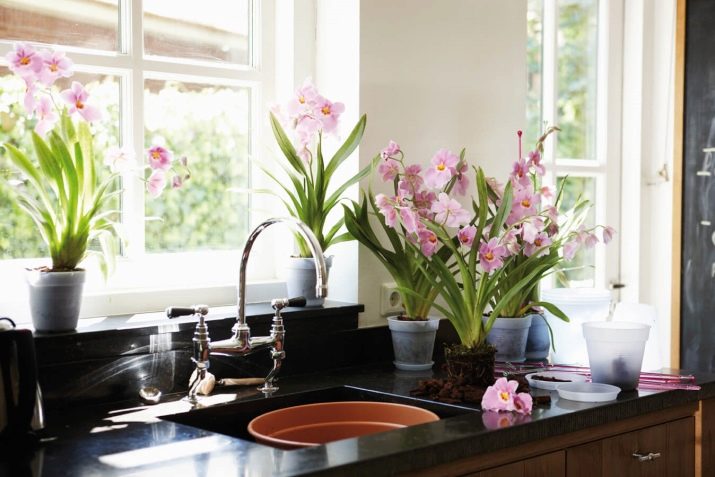
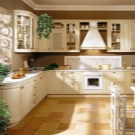
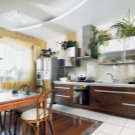

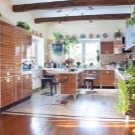

If the kitchen is poorly lit or its windows face north, it is recommended to give preference to those plants that love or at least tolerate shade.
Chlorophytum
The list of kitchen plants is impossible without chlorophytum, which is often called the "bride's veil" or "green lily". It can be identified by the presence of long thin leaves, painted in green or white-green shades, as well as tendrils tending downward. It is at the ends of the latter that children are formed. Chlorophytum looks very beautiful and, in addition, is able to develop even in the most difficult conditions. For example, it is recommended to purchase it for dark kitchens or those that face north.


The culture grows very quickly and does not require special care. In fact, even a novice amateur florist can provide it with proper care. If the owners have to go on vacation, then they don't even need to worry about watering - chlorophytum can survive for a whole month without liquid. The only change that will happen to it is the drying of the leaves, which, in principle, is quickly eliminated when the irrigation regime is restored. This plant will not die, even fill it with water - the roots will just begin to grow more actively.
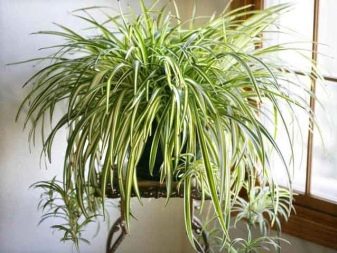
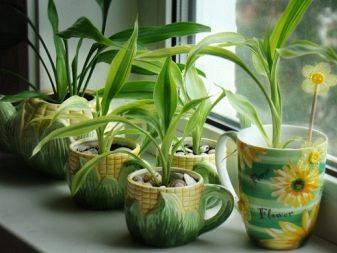
Chlorophytum in the kitchen will purify the air from many harmful substances, for example, carbon monoxide, and also saturate it with oxygen.


Surprisingly, the higher the concentration of dirt in oxygen, the more actively the culture grows and the better it feels. In addition, it is believed that the green "pet" neutralizes harmful radiation from certain types of technology, such as a microwave oven. It is recommended to plant about four plants in a kitchen room with an area of approximately 20 square meters, and one pot will be enough for a five-meter small size. Chlorophytum is placed on any horizontal surface or fixed on a wall or window using special hanging structures and pots.
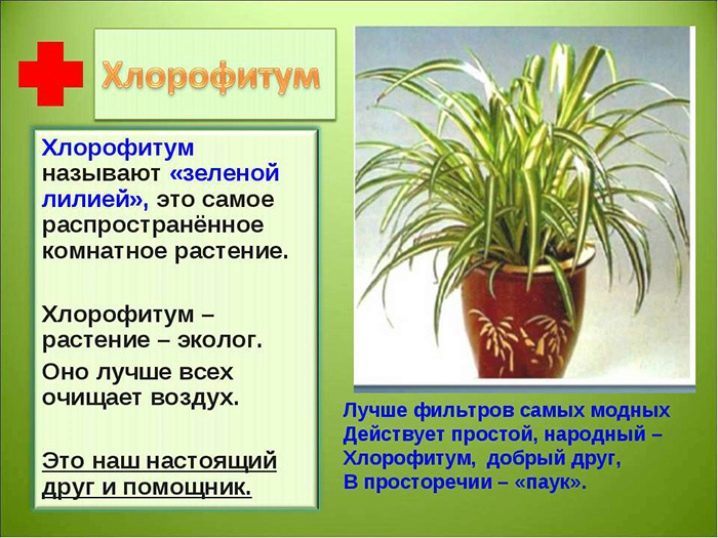
Epipremnum
Epipremnum was formerly known as scindaptus. Like chlorophytum, it perfectly filters the air from excess carbon dioxide, which is a byproduct of using gas burners. Epipremnum is easily identified by the presence of rich green fleshy leaves at the ends of long vines. This culture is evergreen and thermophilic.The plant is not capable of developing with a lack of sunlight or in cold and dry conditions, so it is the kitchen that becomes the optimal place of residence for it. It is important to mention that it cannot grow in gloomy northern rooms.
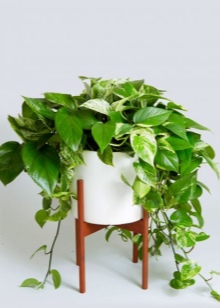
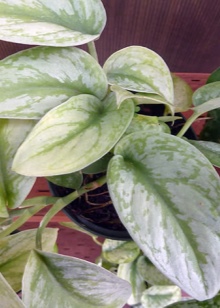

Since vines are actively formed during the development of the epipremnum, it is necessary to select a place for it taking into account this feature. Ideally, the long branches run along the wall or along the upper shelves. In addition to the standard care, the plant requires periodic dusting from the leaves and spraying them.

Cisus
Cisus is known to most flower growers as indoor grapes. It gained its popularity due to its undemanding placement and care, as well as the emergence of beautiful weaves during development. Only by planting cisus in the kitchen is it better to tie the vines to special supports so that they get used to keeping their shape. After some time, the need for them will completely disappear. The plant thrives best at temperatures from 10 to 18 degrees Celsius, depending on the season. It is important to ventilate the room in which it grows, but not to allow drafts or exposure to direct sunlight. Ideally, the location should be either shady or with diffused light.
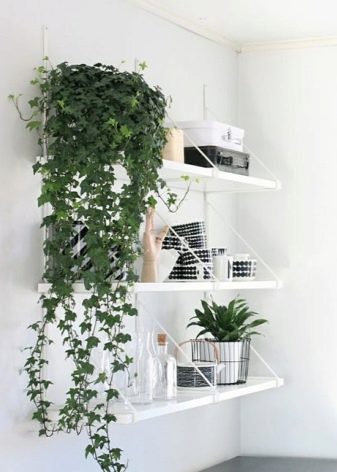
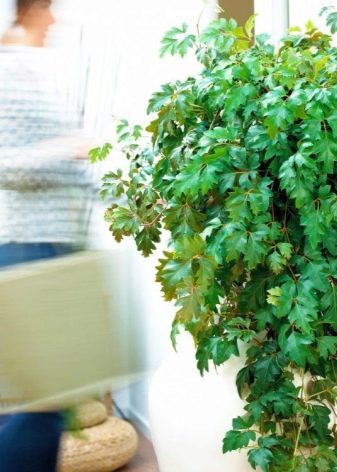
Cisus should not be placed next to batteries - dry air will harm it.
Sansivieria
Sansivieria, popularly known as "mother-in-law's language", will also be well located in the northern cuisine. She is not afraid of shady spaces, however, as well as the bright sun. The plant is highly resistant, feels good at any air humidity, loves warmth, but does not suffer from drafts. In addition, Sansivieria is very loyal to interruptions in watering. In the kitchen, this culture actively absorbs unpleasant odors, up to formaldehyde, and also purifies the air from excess carbon dioxide.
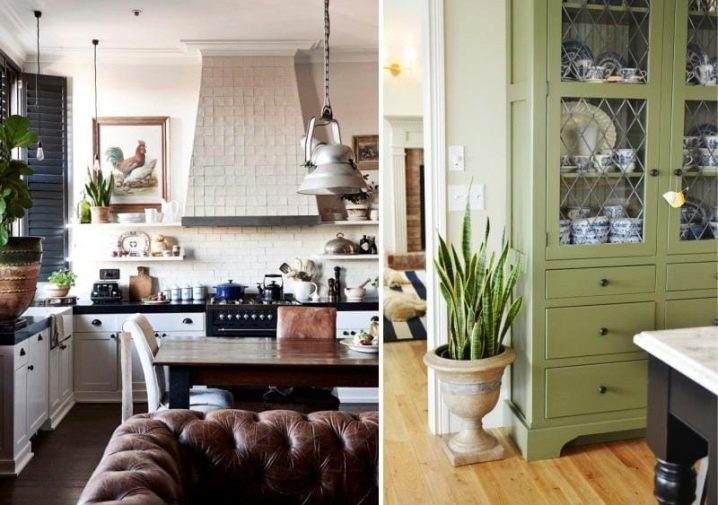
Begonia
Having chosen begonia for kitchen decoration, it is worth giving preference to its special indoor varieties that bloom both in summer and winter. The plant does not like shade, so it is worth attaching it only in kitchens facing west, south or east. Optimal light for begonias is bright and diffused. Despite the fact that the plant feels good at high humidity, you should not additionally spray it, as this threatens the appearance of dark, ugly spots.
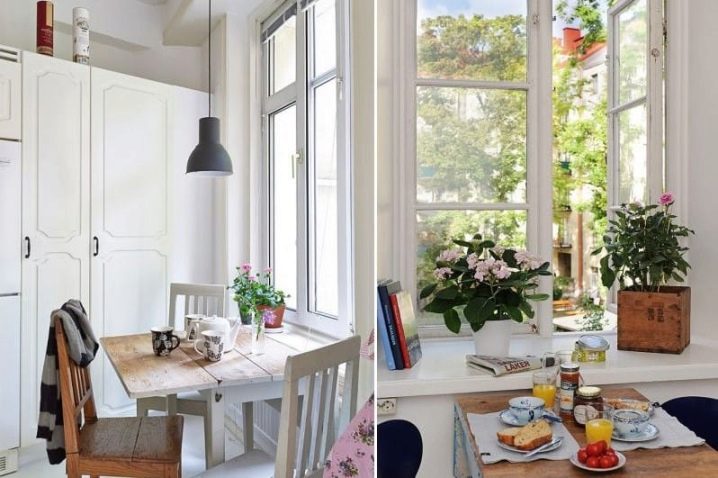
Begonia, like the other plants mentioned above, participates in air filtration, due to the release of phytoncides.
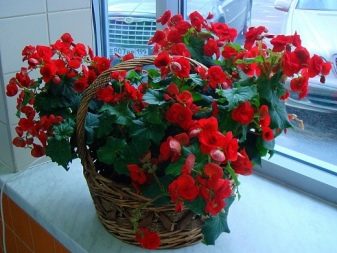
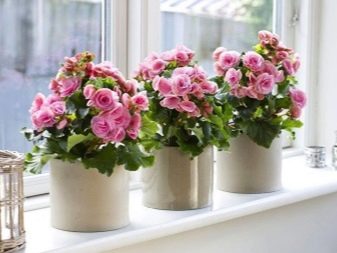
Selection recommendations
The choice of living plants should initially be determined depending on the emerging microclimate of the room. Since temperature drops, dry hot air, and high humidity are possible in the kitchen at different times, preference should be given to unpretentious crops that grow well in such conditions. If such plants seem too boring, then it is worth considering the possibility of acquiring artificial flowers, for example, compositions of scarlet ranunculi, garden roses and peonies.
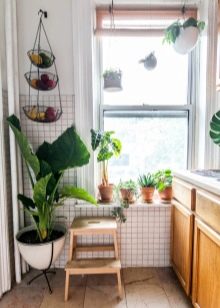
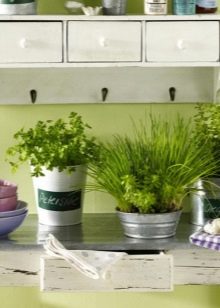

Important climatic conditions include the amount and direction of sunlight, which, if necessary, is corrected by using curtains or phytolamps.
Then the minimum temperature in the room, the presence of drafts, the complexity of care and the peculiarities of the cycle of the flower itself are taken into account. For some people, Feng Shui is important: do plants attract wealth, love and other things necessary for their owners?, and in case of a positive answer, in which places it is best to place them. Of course, for those people who choose kitchen plants not only from an aesthetic point of view, but also from a “health-improving” point of view, it is important to purchase a flower that actively absorbs odors and purifies the air from harmful elements.
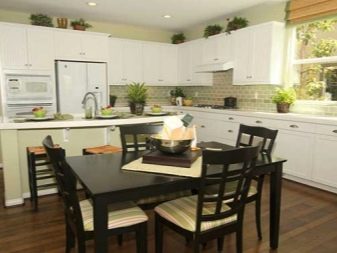

Care Tips
Experts believe that a plant in a pot or vase should not be often moved from place to place, as this is not typical of their nature.However, if the flower becomes ill for some unknown reason, and changing the irrigation regime does not help, the change of "place of residence" may be decisive. Those cultures that love light should be placed closer to the window, at least no further than a couple of meters. For other plants, this requirement is not decisive.


Nevertheless, all flowers - both light and shade-loving, it is important to place as far as possible from the sink and the hob.
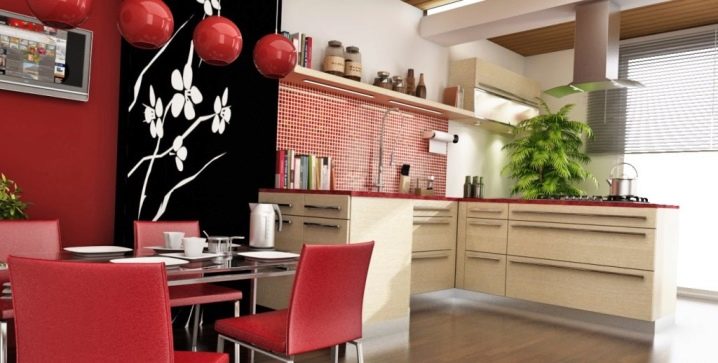
The most common places for kitchen plants are the windowsill and floor. Hot surfaces such as a battery are of course not considered. In addition, the pots are placed on the shelves of cabinets, on the walls, cornices, and even the refrigerator, which is not characterized by strong vibrations. When settling hanging plants, it is recommended to provide them with additional drainage from pebbles for greater stability.
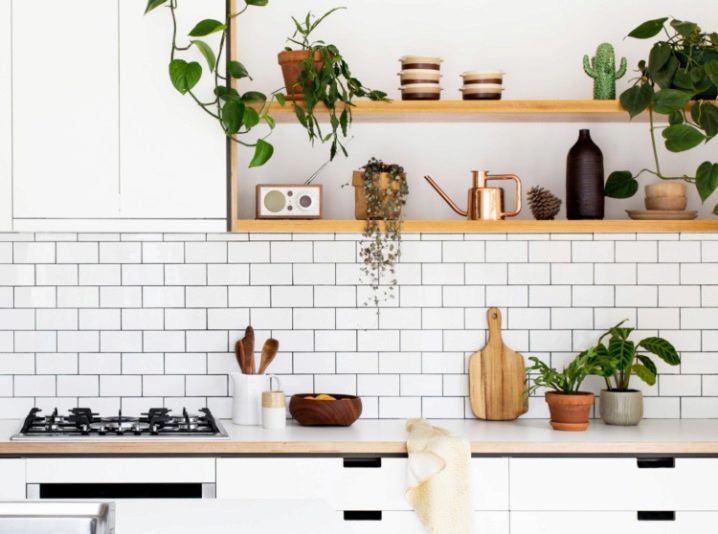
Irrigation of kitchen "inhabitants" is carried out with the present liquid, which has already changed the cold temperature to room temperature.
In order not to spoil cabinets and other surfaces, pots and flowerpots should be additionally equipped with a pallet. The need for watering is determined by the condition of the soil - if the top layer has lightened and dried up to 3 centimeters deep, it's time to water the bushes.
A good solution is to add minerals to the soil, which are accumulators of liquid and can, if necessary, transfer it to plants. After the purchase, the plant is not allowed to be immediately transplanted into a new pots - first, it needs to get used to the new habitat for at least a week. When the procedure does take place, it will have to be done carefully, not clearing the roots from earth clods, but transferring them along with them.
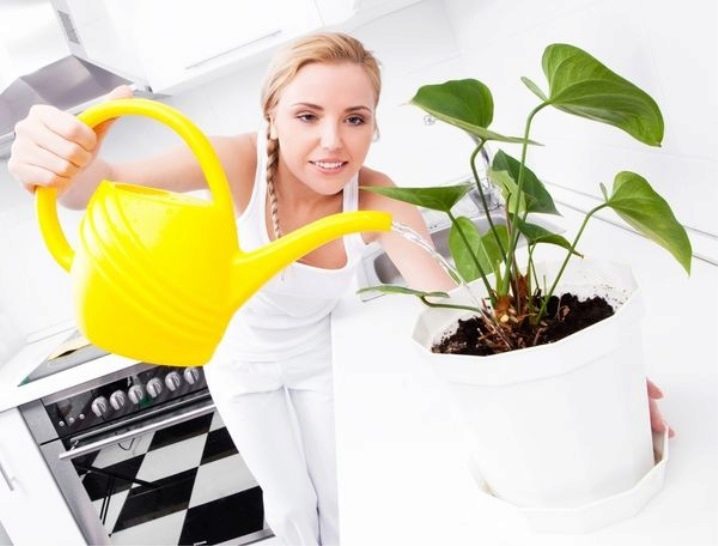
Either expanded clay or crushed egg shells are used as drainage for kitchen plants. The best pots are those made of clay, which provide the necessary air penetration. In addition to watering, kitchen plants also need regular pruning of dried leaves, stems and flowers.

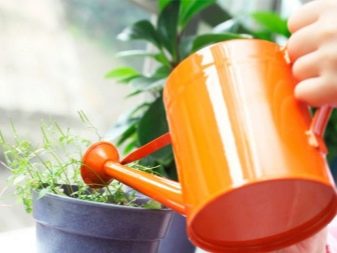
Examples in the interior
The original design of the pots allows you to place kitchen plants in an unusual place. For example, if you plant decorative bushes in metal buckets, then the latter can be attached to special hooks attached to the bottom of the metal shelf. A set of beautiful mugs will turn out to be a very organic neighbor for them. It is worth mentioning that a home garden is often placed in such containers - as an option, mint and basil are grown there.
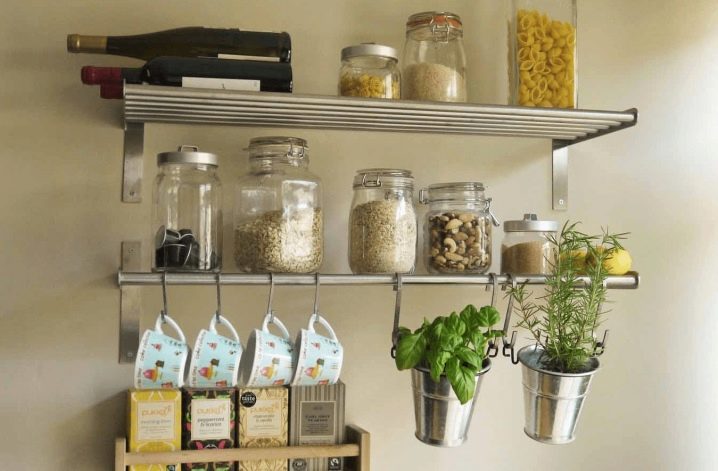
You can decorate any kitchen if you plant the plants in original pots and pots. For example, it can be figurines of little men with "lively" green hair, large colorful mugs with saucers or stylish wooden boxes.
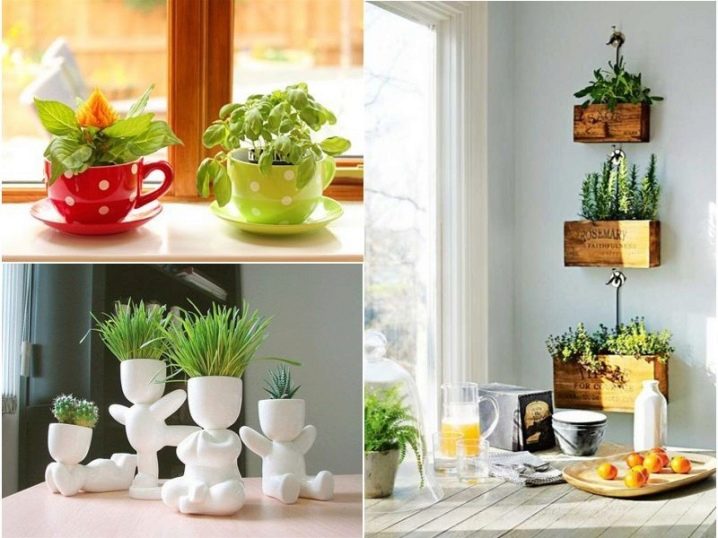
The classic design is the presence of a pair of pots on the windowsills, a hanging pots by the window and a beautiful bouquet in the center of the table.
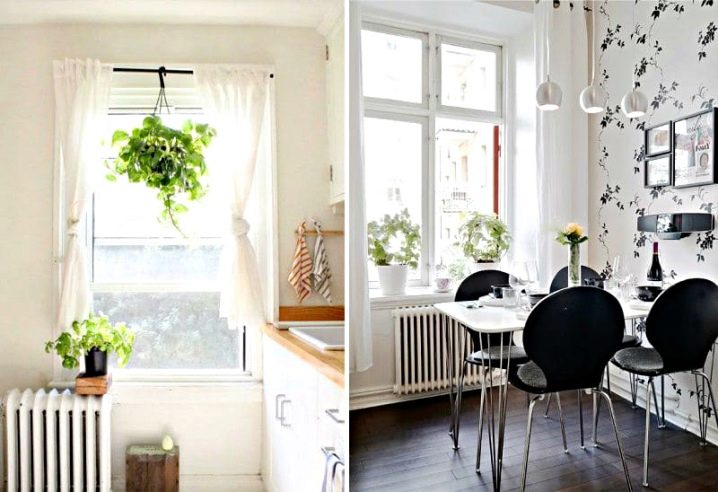
For information on which indoor flowers are best suited for the kitchen, see the video below.































The comment was sent successfully.